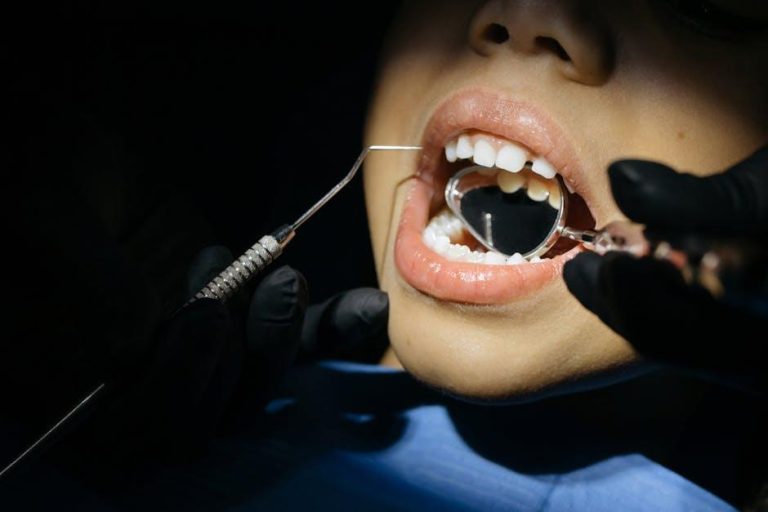National Fluoride Ban Would Substantially Increase Children’s Tooth Decay and Dental Costs, Modeling Study Finds
Fluoride has been a cornerstone of public dental health initiatives for decades, recognized for its critical role in reducing tooth decay. However, recent discussions about banning fluoride — particularly from municipal water supplies — have raised concerns among dental professionals and health policymakers. A new modeling study published by Medical Xpress reveals that a national fluoride ban would significantly increase the risk of children’s tooth decay and push dental treatment costs soaring. In this comprehensive article, we explore the findings of this study, the benefits of fluoride, and practical ways to support children’s oral health in the face of policy changes.
Understanding Fluoride and Its Role in Dental Health
Fluoride is a naturally occurring mineral that strengthens tooth enamel and helps prevent cavities. It has been added to public water supplies since the mid-20th century, leading to a dramatic decrease in dental caries — especially among children. According to the Centers for Disease Control and Prevention (CDC), water fluoridation is one of the 10 great public health achievements of the 20th century.
- How fluoride works: Fluoride integrates into the tooth enamel, making it more resistant to acid attacks caused by bacteria and sugars in the mouth.
- Modes of exposure: Fluoride reaches teeth primarily through fluoridated water, toothpaste, mouth rinses, and some dental treatments.
- Community water fluoridation: This public health measure ensures a low-cost, effective, and equitable method for delivering fluoride to all members of the community.
Key Findings from the Medical Xpress Modeling Study
The recent modeling study simulates the potential impacts of a national fluoride ban on children’s dental health and economic costs. Here are the major findings summarized:
| Impact | Without Fluoride | With Current Fluoride Levels | Percentage Increase |
|---|---|---|---|
| Children’s Tooth Decay Cases | 1,250,000 | 750,000 | +66.7% |
| Annual Dental Treatment Costs (USD) | $230 Million | $140 Million | +64.3% |
| School Absences Due to Dental Problems | 75,000 | 45,000 | +66.7% |
The study highlights that banning fluoride would not only increase the prevalence of tooth decay in children by nearly 67% but also come with a substantial economic burden due to increased dental treatments and associated societal costs like missed school days.
Why a Fluoride Ban Would Be Detrimental to Children’s Oral Health
Fluoride’s protective effects are most significant in children as their developing teeth benefit from stronger enamel. Removing fluoride from community water sources would disproportionately affect vulnerable groups with limited access to private dental care. Some critical points to consider include:
- Increased cavities: Without fluoride’s remineralization benefits, children would experience more cavities, leading to pain and infection.
- Higher treatment costs: Parents and public health systems would bear increased financial strain due to more frequent dental visits and treatments.
- Disparities in oral health: Low-income families, who often rely on community water fluoridation for dental protection, would be most vulnerable.
- Long-term health impacts: Poor oral health in childhood is linked to other systemic health issues and reduced quality of life.
Benefits of Water Fluoridation: Evidence-Based Insights
Decades of research support the safety and benefits of water fluoridation. Here are some notable advantages that emphasize why maintaining fluoride in public water supplies is essential:
- Effective cavity prevention: Studies show fluoridated water reduces tooth decay by 20-40% in children and adults.
- Cost savings: Every $1 invested in fluoridation saves approximately $38 in dental treatment costs, according to the CDC.
- Equitable health advantage: Water fluoridation benefits all community members regardless of socioeconomic status.
- Safe at recommended levels: Both the CDC and WHO confirm water fluoridation is safe and does not cause adverse health effects when maintained within optimal limits.
Practical Tips for Protecting Your Child’s Teeth — With or Without Fluoride
Regardless of community water fluoridation policies, parents and caregivers play a crucial role in nurturing healthy dental habits. Here are actionable tips to reduce tooth decay risk for children:
- Brush teeth twice daily: Use fluoride toothpaste (consult your dentist if fluoride is a concern) and supervise children’s brushing.
- Limit sugary foods and drinks: Frequent sugar intake fuels cavity-causing bacteria.
- Regular dental check-ups: Schedule visits every six months for preventive care and early decay detection.
- Encourage drinking tap water: Tap water with optimal fluoride is preferable to sugary beverages.
- Consider fluoride supplements: When approved by dental professionals, supplements can compensate for lack of fluoridated water.
Case Study: Impact of Fluoride Removal in Community Settings
After fluoride was removed from the public water supply in some regions due to local bans, health authorities observed noticeable effects. One illustrative case includes:
| Community | Years After Fluoride Ban | Increase in Childhood Cavities | Rise in Dental Treatment Costs |
|---|---|---|---|
| City A | 5 years | 35% | 28% increase |
| Township B | 3 years | 42% | 33% increase |
This observed trend confirms the modeling study’s projections and underscores the critical role fluoride plays in preventing dental disease on a community level.
Conclusion: Why Protecting Fluoride Access Is Vital for Children’s Oral Health
The recent modeling study highlighted by Medical Xpress paints a compelling picture: a national fluoride ban would significantly worsen children’s tooth decay rates and inflate dental care costs across the country. It would amplify oral health disparities and strain not only families but also the healthcare system. Water fluoridation remains one of the most effective, affordable, and equitable public health interventions available.
Parents, policymakers, and community leaders must therefore prioritize the continuation of fluoride access in public water supplies, while advocating for strong oral hygiene practices at home. By doing so, they safeguard children’s smiles — along with their overall health and well-being — for generations to come.
Stay informed. Stay proactive. Support fluoride to protect your child’s oral health.


